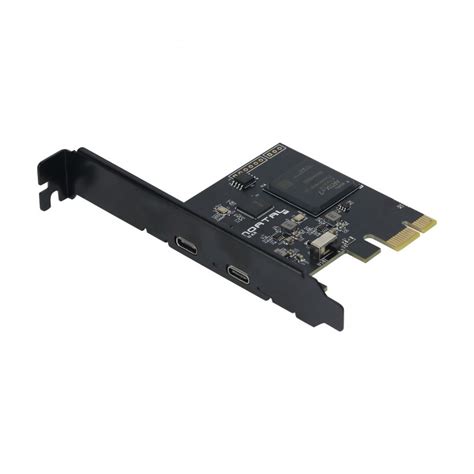Introduction
Direct memory access (DMA) boards play a crucial role in modern computer systems, enabling efficient data transfer between memory and peripheral devices without involving the central processing unit (CPU). This frees up the CPU to focus on other tasks, enhancing overall system performance. In this article, we will explore the concept of DMA boards, their components, benefits, and various applications.

Components of a DMA Board
DMA Controller
The DMA controller is the central component of a DMA board. It manages the data transfer process, arbitrates access to the system bus, and ensures data integrity. It typically includes the following subcomponents:
- Bus request/grant logic: Coordinates access to the system bus.
- Address generator: Generates the memory addresses for data transfer.
- Data buffer: Stores data temporarily during transfer.
Memory Interface
The memory interface connects the DMA board to the system memory. It enables the DMA controller to read and write data to and from memory.
Peripheral Interface
The peripheral interface connects the DMA board to peripheral devices. It provides the necessary signals for data transfer and control.
Benefits of Using DMA Boards
Improved Performance
By offloading data transfer tasks from the CPU to the DMA board, the CPU is freed up to handle other critical tasks. This results in significant performance improvements, especially in applications that require frequent data transfers.
Reduced Latency
DMA boards minimize data transfer latency by directly accessing memory without CPU involvement. This is particularly beneficial for real-time applications that require immediate data processing.
Increased Bandwidth
DMA boards can achieve higher data transfer rates than traditional CPU-driven transfers. This is because they can utilize the full bandwidth of the system bus.
Scalability
DMA boards can be configured to support multiple peripheral devices and high data transfer rates. This makes them ideal for systems that require expansion or upgrades.
Applications of DMA Boards
DMA boards are widely used in various applications across industries. Some notable examples include:
- Networking: Transferring data between network interfaces and memory.
- Graphics Processing: Moving graphics data between the graphics card and memory.
- Mass Storage: Reading and writing data to/from hard drives, solid-state drives (SSDs), and other storage devices.
- Audio Processing: Moving audio data between sound cards and memory.
- Industrial Automation: Transferring data between sensors and actuators.
Emerging Applications of DMA Boards
Internet of Things (IoT)
DMA boards can facilitate efficient data transfer between IoT devices and cloud-based servers, enabling real-time data analysis and control.
Artificial Intelligence (AI)
DMA boards can accelerate data transfer for AI applications, such as training and inferencing models.
Automotive Systems
DMA boards support data transfer for advanced driver assistance systems (ADAS) and autonomous driving features.
Implementation of DMA Boards
Implementing DMA boards involves several steps:
- Hardware Installation: Mount the DMA board onto the computer system.
- Software Installation: Install device drivers and configure the DMA controller.
- Peripheral Device Configuration: Set up peripheral devices to work with the DMA board.
- Data Transfer: Initiate data transfer between the peripheral devices and memory.
Performance Considerations
The performance of DMA boards is influenced by several factors, including:
- System Bus Speed: The speed of the system bus affects the overall data transfer rate.
- DMA Controller Capabilities: The features and capabilities of the DMA controller determine its performance.
- Peripheral Device Characteristics: The speed and data transfer capabilities of the peripheral devices impact performance.
Conclusion
DMA boards are essential components in modern computer systems, enabling efficient data transfer between memory and peripheral devices. They offer significant benefits in terms of improved performance, reduced latency, increased bandwidth, and scalability. As technology advances, DMA boards will continue to play a vital role in new applications, including IoT, AI, and automotive systems. By understanding the concepts, components, and applications of DMA boards, engineers and system designers can effectively utilize them to enhance the performance and capabilities of their systems.
Additional Information
DMA Board Market Size
According to a report by MarketWatch, the global DMA board market size was valued at USD 2.1 billion in 2021 and is projected to reach USD 3.2 billion by 2028, growing at a compound annual growth rate (CAGR) of 6.5%.
Industry Trends
The DMA board industry is experiencing a shift towards miniaturization and integration. Manufacturers are developing smaller and more compact boards with integrated features to meet the space constraints and demand for reduced power consumption in various applications.
FAQs
1. What is the difference between DMA and programmed I/O?
DMA involves the use of a dedicated DMA controller to manage data transfer, while programmed I/O requires the CPU to handle the entire data transfer process.
2. What are the advantages of using a DMA board?
DMA boards improve system performance, reduce latency, increase bandwidth, and provide scalability.
3. How does a DMA controller work?
The DMA controller arbitrates access to the system bus, generates memory addresses, and stores data in a buffer during transfer.
4. What are the applications of DMA boards?
DMA boards are used in networking, graphics processing, mass storage, audio processing, industrial automation, and emerging technologies such as IoT, AI, and automotive systems.
5. What are the performance considerations for DMA boards?
Performance is influenced by factors such as system bus speed, DMA controller capabilities, and peripheral device characteristics.
6. How to configure a DMA board?
Configuration typically involves hardware installation, software installation, peripheral device setup, and data transfer initiation.
